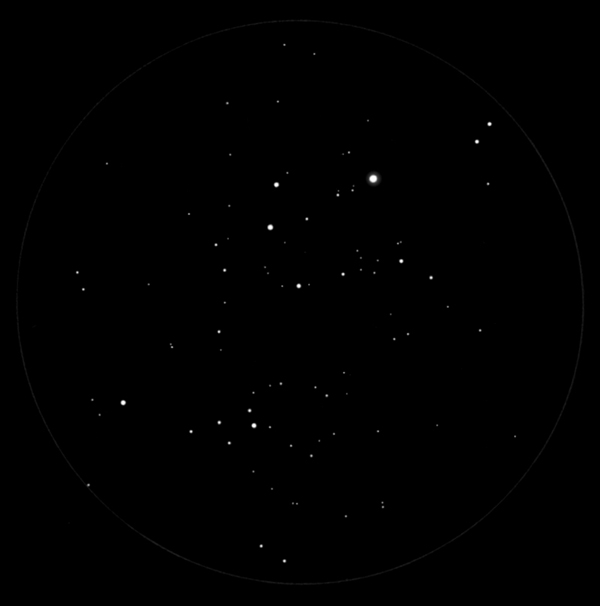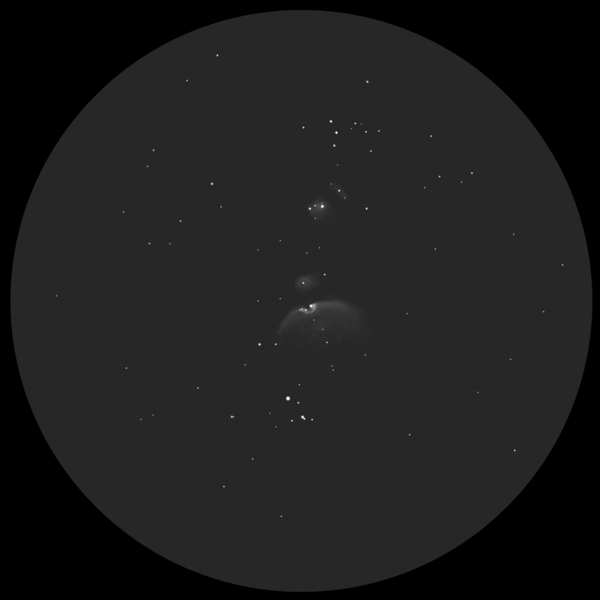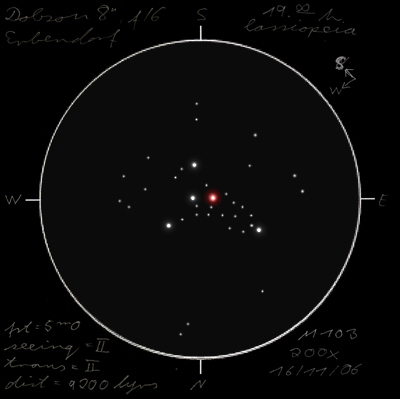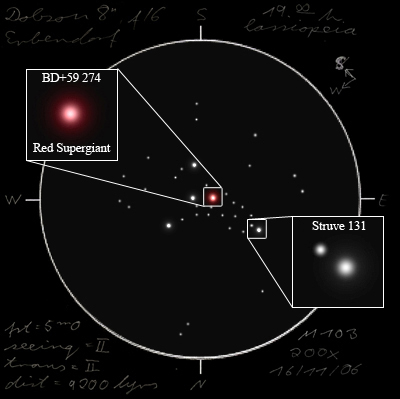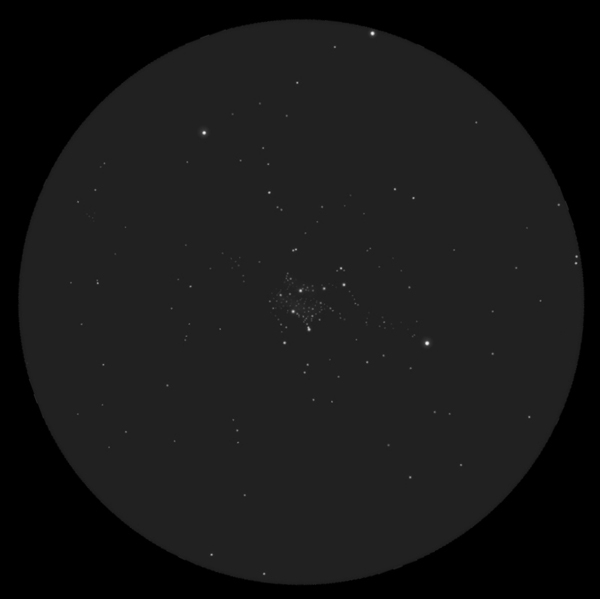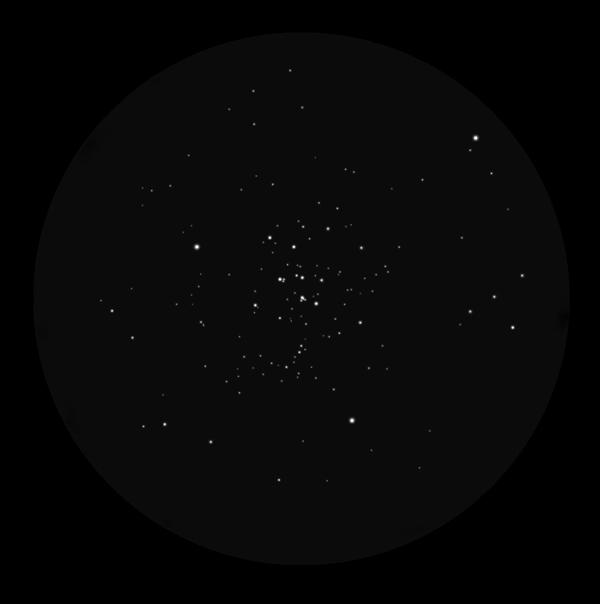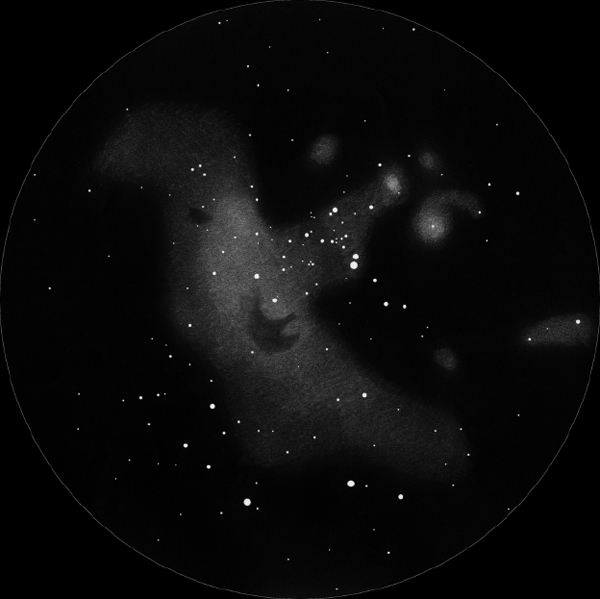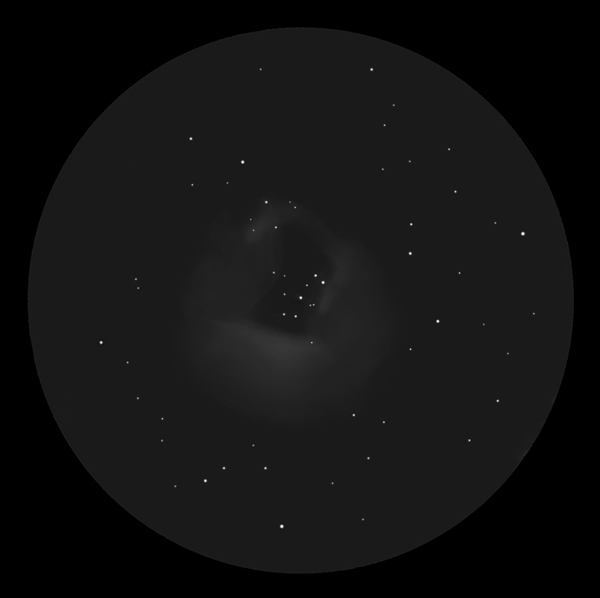The Alpha-Persei cluster caught my attention during a naked eye observation in
Austria. Melotte 20 is very large: 3°! The brightest star in the sketch is Mirphak
(Alpha Persei). I used the ETX 70 at the lowest power of 8.75. The FOV is 4.8°. A
total of 88 stars are captured. The limiting magnitude at that power is mag 9.5. A
higher power would reveal more stars, but then the cluster-look is lost. This
cluster also has a nickname : the Saxophone Cluster. Mel 20 is not a famous target.
But the view is very rewarding. I made a naked eye observation of Mel 20 last year,
so a powered view was the next logical step. Here is an observation of the cluster
at a power of 8.75 with the little ETX 70. Melotte 20 has also a Collinder number,
but I like the Melotte designation (patriotic feelings rise, due to the fact that
Philibert Jacques Melotte had Belgian parents )
(North is up, West is right)
Location : Bekkevoort, Belgium
Date: February 4, 2007 , 19.00UT
Seeing: 2 on a scale of 5, Transparency : 2
Scope : ETX 70
Eyepiece : TV 40mm
Rony De Laet
http://www.geocities.com/rodelaet, my personal website.

